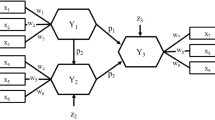Abstract
This article presents an overview of discrete choice modeling for making pricing decisions in services. During recent years, discrete choice modeling has emerged as an effective approach for developing analytical models and for estimating relative weights of parameters based on empirical data. For estimation purposes, typically one of two forms of data is used: transactional data captured in databases (revealed-preference data); or primary experimental data (stated-preference data). In this article, we provide detailed illustration of both approaches for pricing decisions for hospitality services. Finally, we discuss the managerial implications of the discrete choice modeling approach described earlier in the article.


Similar content being viewed by others
References
Anderson, C.K. and Xie, X. (2009) A Choice Based Dynamic Programming Approach for Setting Opaque Prices. Cornell University. Working Paper.
Anderson, N.H. (1981) Foundations of Information Integration Theory. New York: Academic Press.
Anderson, N.H. (1982) Methods of Information Integration Theory. New York: Academic Press.
Ben-Akiva, M. and Lerman, S.R. (1991) Discrete Choice Analysis. Massachusetts: The MIT Press.
Easton, F. and Pullman, M.E. (2001) Optimizing service attributes: The seller's utility problem. Decision Sciences 32 (2): 251–275.
Garrow, L.A., Jones, S.P. and Parker, R.A. (2007) How much airline customers are willing to pay: An analysis of price sensitivity in online distribution channels. Journal of Revenue and pricing Management 5 (4): 271–290.
Gensch, D.H. and Recker, W.W. (1979) The multinomial, multiattribute logit choice model. Journal of Marketing Research 16 : 124–132.
Green, P.E. and Krieger, A.M. (1996) Individualized hybrid models for conjoint analysis. Management Science 42 : 850–867.
Green, P.E. and Srinivasan, V. (1990) Conjoint analysis in marketing: New developments with implications for research and practice. Journal of Marketing 54 : 3–19.
Guadagni, P.M. and Little, J.D.C. (1983) A logit model of brand choice based on scanner data. Marketing Science 2 : 203–238.
Hensher, D.A. and Johnson, L. (1980) Applied Discrete-Choice Modelling. London: Croom-Helm.
Iqbal, Z., Verma, R. and Baran, R. (2003) Understanding consumer choices and preferences in transaction-based e-services. Journal of Service Research 6 (1): 51–66.
Louviere, J.J. (1988) Analyzing Decision Making: Metric Conjoint Analysis. Newbury Park, CA: SAGE Publications.
Louviere, J. and Timmermans, H. (1990) Stated preference and choice models applied to recreation research: A review. Leisure Sciences 12 (1): 9–32.
McFadden, D. (1986) The choice theory approach to market research. Marketing Science 5 (4): 275–297.
Pullman, M., Verma, R. and Goodale, J. (2000) Service design and operations strategy formulation in multicultural markets. Journal of Operations Management 19 (2): 239–254.
Schwartz, B. (2004) The Paradox of Choices: Why More is Less. HarperCollins Publishers.
Shubik, M. (1987) What is an application and when is theory a waste of time? Management Science 33 (12): 1511–1522.
Swait, J. and Louviere, J.J. (1993) The role of the scale parameter in the estimation and comparison of multinomial logit models. Journal of Marketing Research 30 : 305–314.
Talluri, K.T. and van Ryzin, G.J. (2004a) The Theory and Practice of Revenue Management. Boston, MA: Kluwer Academic Publishers, New York.
Talluri, K. and van Ryzin, G. (2004b) Revenue management under a general discrete choice model of consumer behavior. Management Science 50 (1): 15–33.
Verma, R., Iqbal, Z. and Plaschka, G. (2004) Understanding customer choices in E-financial services. California Management Review 46 (4): 43–67.
Verma, R., Plaschka, G., Hanlon, B., Livingston, A. and Kalcher, K. (2008) Predicting customer choices in services using discrete choice analysis. IBM Systems Journal 47 (1): 179–191.
Verma, R., Thompson, G.M. and Louviere, J.J. (1999) Configuring service operations in accordance with customers needs and preferences. Journal of Service Research 1 (3): 262–274.
Verma, R., Thompson, G.M., Moore, W.L. and Louviere, J.J. (2001) Effective design of products/services: An approach based on integration of marketing and operations management decisions. Decision Sciences 32 (1): 165–193.
Victorino, L. and Verma, R. (2007) Scripting the Service Encounter: An Empirical Analysis. Working Paper.
Vulcano, G., van Ryzin, G.J. and Chaar, W. (forthcoming) Choice-based revenue management: An empirical study of estimation and optimization. MSOM, in press.
Author information
Authors and Affiliations
Corresponding author
Rights and permissions
About this article
Cite this article
MacDonald, L., Anderson, C. & Verma, R. Using revealed- and stated-preference customer choice models for making pricing decisions in services: An illustration from the hospitality industry. J Revenue Pricing Manag 11, 160–174 (2012). https://doi.org/10.1057/rpm.2010.21
Received:
Revised:
Published:
Issue Date:
DOI: https://doi.org/10.1057/rpm.2010.21




